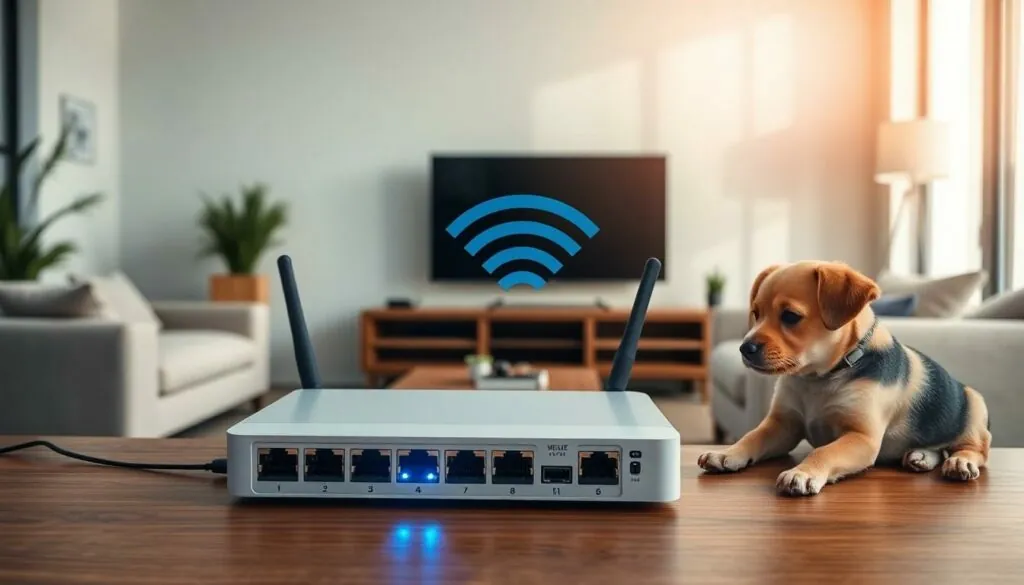Table of Contents
ToggleIn today’s tech-savvy world, a home networking box isn’t just a luxury; it’s a necessity. Imagine streaming your favorite show without buffering or enjoying a video call without that awkward freeze frame. A reliable networking box can turn your home into a seamless digital paradise, where devices connect effortlessly and everyone stays happy—even your Wi-Fi-loving pets.
Overview of Home Networking Box
A reliable home networking box serves as the backbone of a connected home. This device simplifies internet access, ensures ample coverage and supports multiple devices simultaneously.
What Is a Home Networking Box?
A home networking box, commonly known as a router or modem-router combo, connects devices to the internet. It’s essential for enabling Wi-Fi access throughout the home. Users benefit from a consistent internet connection for streaming, gaming, and browsing. The device often includes features like firewalls for security and Quality of Service settings for prioritizing bandwidth.
Key Features to Look For
When selecting a home networking box, several key features stand out. Look for dual-band or tri-band capabilities, which help reduce congestion in busy households. Another important aspect is the number of Ethernet ports available, allowing for wired connections to devices like gaming consoles or smart TVs. Security features should also not be overlooked; WPA3 encryption offers improved protection against unauthorized access. Finally, consider compatibility with the latest Wi-Fi standards, like Wi-Fi 6, for better speeds and performance.
Types of Home Networking Boxes

Home networking boxes come in various types, catering to distinct user needs. Understanding the differences between these options is essential for optimizing network performance.
Wired vs. Wireless Options
Wired networking boxes focus on providing stable, high-speed connections through Ethernet cables. Gaming setups and home offices often benefit from reduced latency and increased bandwidth. Wireless options offer flexibility and convenience, allowing multiple devices to connect without physical cords. This option suits smart homes where devices frequently move or where aesthetics require minimal clutter. Each option has benefits, making user requirements the primary factor in choosing a suitable network setup.
All-in-One Networking Solutions
All-in-one networking solutions combine modems and routers in a single device. These comprehensive systems simplify installation and minimize equipment clutter. Users often appreciate the convenience of managing both functions through one interface. Some all-in-one options provide enhanced features like built-in firewalls, ensuring additional security. Cost-effectiveness also appeals to those looking to streamline their network setups while maintaining reliable connections. Each integrated solution addresses various home networking needs with ease.
Benefits of Using a Home Networking Box
Home networking boxes provide significant advantages for modern households. They enhance connectivity, improve performance, and support various devices efficiently.
Improved Internet Speed
Enhanced internet speed stands out as a primary benefit of using a home networking box. Devices like dual-band or tri-band routers allow for faster data transfer by distributing traffic over multiple frequencies. Users experience reduced lag during streaming, gaming, and browsing activities. Many routers support the latest Wi-Fi standards, including Wi-Fi 6, which offers increased bandwidth and speeds, accommodating more devices without sacrificing performance. Improved network speed ensures reliability, especially for households with multiple users engaging in high-bandwidth activities simultaneously.
Enhanced Security Features
Robust security features significantly improve network protection when utilizing a home networking box. Advanced security protocols like WPA3 encryption provide stronger safeguards against potential threats. Users benefit from built-in firewalls that monitor traffic and block unauthorized access. Frequent firmware updates ensure devices maintain an up-to-date defense against emerging vulnerabilities. Parental controls often accompany these devices, allowing families to manage internet access effectively. Enhanced security features create a safer online environment for all connected devices, alleviating concerns about privacy and security.
Popular Home Networking Box Brands
Numerous brands provide reliable home networking boxes, each with unique features and strengths.
Brand A Review
Brand A excels in delivering high-speed performance with its tri-band routers. Users benefit from enhanced speeds, supporting multiple devices efficiently during peak usage hours. Installations are user-friendly, creating a hassle-free setup for both tech-savvy individuals and novices. Additionally, Brand A includes advanced security features, like WPA3 encryption, ensuring robust protection for connected devices. Its dedicated mobile app makes it simple to monitor and manage network traffic. Customer support has positive reviews, often praised for responsive and knowledgeable assistance.
Brand B Review
Brand B offers an appealing combination of price and performance, making it a popular choice among budget-conscious consumers. Known for its dual-band capabilities, this brand provides solid internet speeds for everyday tasks, including streaming and browsing. Users appreciate the extensive range of Ethernet ports, accommodating wired connections for stable access. Brand B’s customizable settings allow advanced users to optimize their network according to specific needs. Additionally, firmware updates are regular, keeping security measures up to date. Many recommend this brand for homes with moderate internet demands.
Installation and Setup Process
Setting up a home networking box involves several straightforward steps to ensure optimal performance and security. A well-executed installation and setup process enhances connectivity for all devices in the home.
Step-by-Step Guide
- Unbox the home networking box and connect it to a power source.
- Connect the modem (if separate) to the networking box using an Ethernet cable.
- Link devices like computers or gaming consoles to the networking box via Ethernet cables for stability.
- Follow the manufacturer’s instructions to access the setup interface, typically through a web browser.
- Configure Wi-Fi settings, including the network name and password.
- Update firmware to the latest version for security and performance improvements.
- Test the connection on various devices to ensure optimal speed and coverage.
Common Challenges and Solutions
Network connectivity issues often arise during setup. Power cycling the devices frequently resolves minor glitches. Users might experience difficulty connecting devices to Wi-Fi; in such cases, double-checking the entered password helps. If internet speeds lag, placing the networking box in a central location can improve coverage. Firmware updates can fix recurring issues and improve performance. Lastly, if security settings seem complex, utilizing the router’s mobile app simplifies the process, offering guidance for beginners.
A reliable home networking box is vital for creating a seamless digital experience in today’s connected world. With the right device, users can enjoy uninterrupted streaming, gaming, and browsing while ensuring security and stability across multiple devices.
Investing in a quality router or modem-router combo can significantly enhance internet performance and simplify network management. By understanding the various options and features available, individuals can select a home networking solution that best meets their needs.
Ultimately, a well-chosen home networking box not only improves connectivity but also supports the growing demands of smart homes and online activities, making it an essential component for every modern household.



